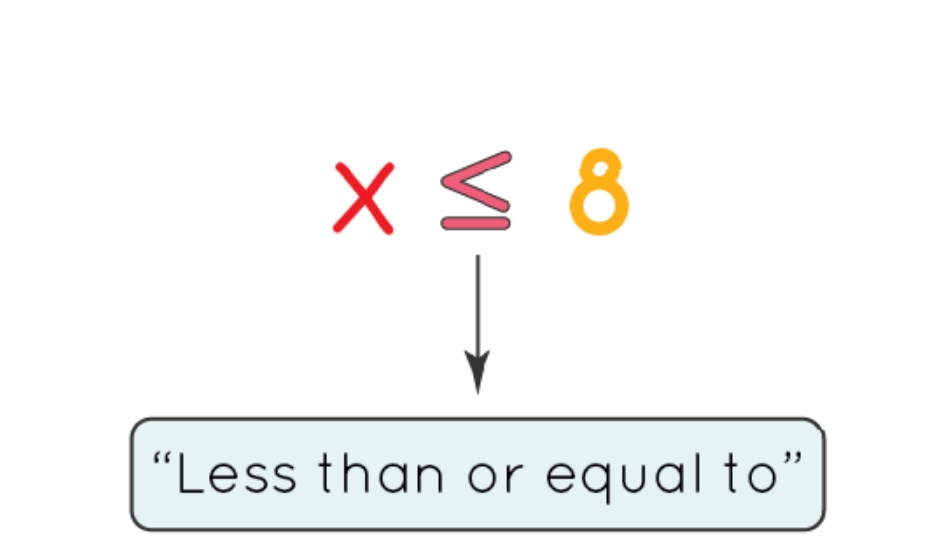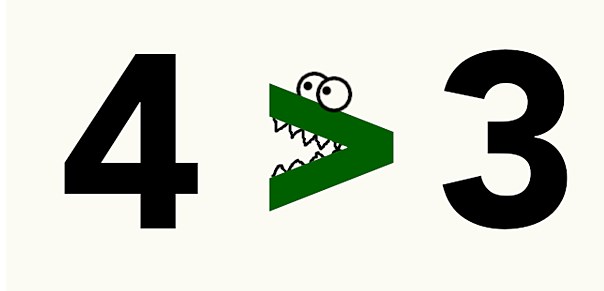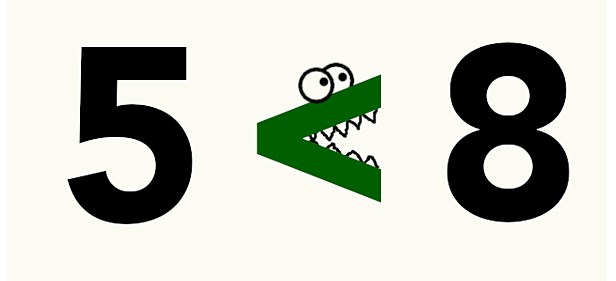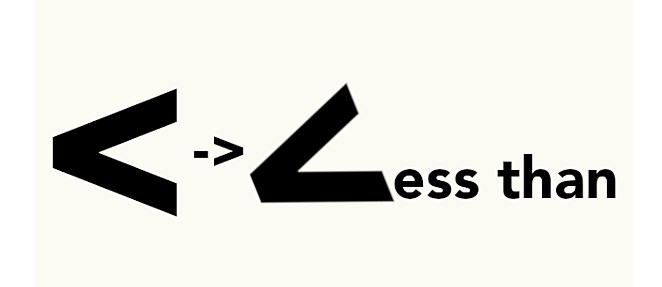Table of Contents
The greater than less than calculator displays the result whether the first number is less than or greater than the second number. STUDYQUERIES’s online greater than less than calculator tool makes calculations easier and faster, and it compares numbers in a fraction of a second.
How to Use Greater Than Less Than Calculator?
To use the greater than less than calculator, follow these steps:
- Step 1: Input two numbers in the respective input fields “Number 1” and “Number 2”
- Step 2: Compare the numbers by clicking the “Compare” button
- Step 3: The result will now be displayed in the output field, indicating whether the first number is greater or smaller than the second number
Greater Than Less Than Calculator
What Is Greater Than Less Than Sign And Calculator?
To compare two numbers, greater than and less than symbols are used. When a number is bigger than or smaller than another number, greater than less than symbols are used. If the first number is greater than the second number, greater than symbol \(\pmb{\color{red}{{”\gt”}}}\) is used. If the first number is less than the second number, less than symbol \(\pmb{\color{red}{{”\lt”}}}\) is used. Mathematics is a language that has its own rules and formulas.

Mathematical symbols are unique to all fields, and they are universally accepted. Using mathematical symbols requires less space and time. It allows individuals to communicate information visually. In this article, we will cover the definition of greater than and less than symbols, their symbols, and some examples of how to compare two numbers by using less than and greater than signs.
Greater Than and Less Than Symbols Definition
Greater than and less than symbols denote an inequality between two values. The symbol used to denote greater than is \(\pmb{\color{red}{{”\gt”}}}\) and for less than is \(\pmb{\color{red}{{”\lt”}}}\).
Greater Than Sign
In math, a greater than symbol is placed between two values when the first number is greater than the second number.
For example \(10 \gt 5\). Here 10 is greater than 5.
In inequality, the greater than symbol is always pointed to the greater value, and the symbol consists of two equal-length strokes that connect at an acute angle at the right. \(\pmb{\color{red}{{”\gt”}}}\).
Less Than Sign
A less-than symbol is also placed between two numbers if the first number is less than the second.
An example for less than the inequality symbol is \(5 \lt 10\). It means that 5 is less than 10.
In inequality, less than symbol points to the smaller value where the two equal length strokes connect at an acute angle at the left \(\pmb{\color{red}{{”\lt”}}}\).
The greater than less than symbol reduces the time complexity and makes understanding easy for the reader.
Equal To Sign
When two numbers or values are equal, the ‘equal to’ sign indicates that they are equal. It contradicts both the greater than and less than signs. Even in terms of writing the equations, we use equal to sign. It is denoted by \(\color{red}{{\mathbf{”=”}}}\).
Example: If \(a \color{red}{=} 10\) and \(b \color{red}{=} 10\), then \(a \color{red}{=} b\).
Trick to Remember Greater Than Less Than Sign
Three methods are generally used to remember greater than and less than symbols. These are:
Alligator Method
It is easiest to memorize the greater than and less than signs by picturing them as alligators (or crocodiles) with fish on either side. Alligators always try to eat the most number of fish, so whatever number the mouth is open towards is the number they are looking for.

The alligator’s mouth is open toward the 4, so even if we weren’t sure that 4 is a bigger number than 3, then \(\pmb{\color{red}{{\gt}}}\) sign would tell us. All inequality signs give us the relationship between the first number and the second, beginning with the first number, so \(4\ \pmb{\color{red}{{\gt}}}\ 3\) translates to \(\pmb{\color{red}{4\ is\ greater\ than\ 3.}}\)

This also works the other way around. If you see \(5\ \pmb{\color{red}{{\lt}}}\ 8\), imagine the \((\pmb{\color{red}{{\lt}}})\) sign as a little alligator mouth about to chomp down on some fish.
The mouth is pointed at the 8, which means that 8 is more than 5. The sign always tells us the relationship between the first number and the second, so \(5\ \pmb{\color{red}{{\lt}}}\ 8\) can be translated to \(\pmb{\color{red}{5\ is\ less\ than\ 8}}.\)
When you’re working with inequalities, you can even draw little eyes on the symbols to help you remember which one means what. If you are having trouble remembering these, don’t be afraid to get a little creative until you have them down.
L Method
This method is pretty simple—\(\color{red}{“less\ than”}\) starts with a letter \(\color{red}{L}\), so the symbol that looks most like an \(\color{red}{L}\) is the one that means \(\color{red}{“less\ than.”}\)

\(\color{red}{\lt}\) looks more like an \(\color{red}{L}\) than \(\color{red}{\gt}\), so \(\color{red}{\lt}\) means \(\color{red}{“less\ than.”}\) Because \(\color{red}{\gt}\) doesn’t look like an \(\color{red}{L}\), it can’t be \(\color{red}{“less\ than.”}\)
Equal Sign Method
Once you’ve mastered the \(\color{red}{Alligator}\) or \(\color{red}{L\ method}\), the other symbols are easy! \(\color{red}{Greater\ than\ or\ equal\ to}\) and \(\color{red}{less\ than\ or\ equal\ to}\) are just the applicable symbol with half an equal sign under them.
For example, \(\color{red}{4\ or\ 3 \ge 1}\) shows us a greater sign over half an equal sign, meaning that \(\color{red}{4\ or\ 3\ are\ greater\ than\ or\ equal\ to\ 1.}\)
It works the other way, too. \(\color{red}{1 \le 2\ or\ 3}\) shows us a less than sign over half of an equal sign, so we know it means that \(\color{red}{1\ is\ less\ than\ or\ equal\ to\ 2\ or\ 3.}\)
The \(\color{red}{does\ not\ equal}\) sign is even easier! It’s just an equal sign crossed out. If you see an equal sign crossed out, it means that the equal sign doesn’t apply—thus, \(\color{red}{2 \neq 3}\) means that \(\color{red}{2\ does\ not\ equal\ 3.}\)
Applications of Greater Than Less Than Symbols in Algebra
Mathematical problems rarely end inequality, as we all know. It should sometimes have inequalities, such as greater than and less than signs. A mathematical expression can be used to express the statement.
For example, \(\color{red}{x}\) is the number of students in a class. If there are more than 45 students in a class, and again 5 more students join in your class, then there are more than 50 students in a class. This statement is mathematically expressed as $$\color{red}{x+5 \gt 45}$$
Solving inequalities is similar to solving equations in mathematics. Always keep the inequalities direction in mind when dealing with inequality problems. Tricks may not affect the direction of inequalities in a problem. There it is.
- Divide or multiply the inequalities on both sides by the same positive number
- By adding or subtracting the same number from both sides of the inequality expression
Greater Than and Less Than Symbols Examples
Some of the examples of greater than symbol are as follows
- \(4 \gt 1\) means 4 is greater than 1.
- \(2^5 > 2^3\): \(2^5\) can be written as \(2 \times 2 \times 2 \times 2 \times 2 =32\) and \(2^3\) can be written as \(2 \times 2 \times 2 =8\). So \(32 \gt 8\) .Therefore \(2^5\ is\ greater\ than\ 2^3\)
- \(\frac{10}{2} \gt \frac{6}{3}\): \(\frac{10}{2}\) equals to \(5\) and \(\frac{6}{3}\) equals to \(2\). So that, \(5 \gt 2\) which implies that \(\frac{10}{2}\) is greater than \(\frac{6}{3}\).
- \(5\frac{1}{2} \gt 2\frac{2}{3}\): In the mixed fractions, first convert into the fraction so that it becomes \(\frac{11}{2} \gt \frac{8}{3}\) which equals to \(5.5 \gt 2.7\).
- \(0.1 \gt 0.01\): In number system, which consists of decimal numbers where the value \(0.1\) is greater than \(0.01\)
- \(1 \gt -2\): Here \(1\) is a positive integer and \(-2\) is a negative integer. We know that the always positive integer is greater than the negative integer. So that \(1\) is greater than \(-2\).
- \(-2 \gt -5\): Consider the negative integers, in which the smallest number has a greater value than the largest number. So we conclude that \(-2\) is greater than \(-5\).
Word Problems on Greater than and Less than Symbols
$$\pmb{\color{red}{Dizzy\ has\ fifteen\ bananas\ and\ Mansi\ has\ nineteen\ bananas.\ Find\ out\ who\ has\ more\ bananas.}}$$
Given, Dizzy has 15 bananas.
Mansi has 19 bananas.
so, 19 is greater than 15, \(19 \gt 15\)
Therefore Mansi has more bananas than Dizzy.
$$\pmb{\color{red}{Dizzy\ sleeps\ for\ forty\ minutes\ and\ Mansi\ sleeps\ for\ fifty\ minutes\ every\ day\ in\ the\ afternoon.}}$$
$$\pmb{\color{red}{Find\ out\ who\ sleeps\ for\ less\ time.}}$$
Given, Dizzy sleeps for 40 minutes
Mansi sleeps for 50 minutes
We know that 40 minutes is less than 50 minutes, so we can write it as \(40 \lt 50\)
As a result, Dizzy sleeps less.
Greater Than Less Than Fractions Calculator:
A greater than less than fractions calculator allows you to compare fractions and determine whether one fraction is greater than, less than, or equal to another fraction. You input two fractions, and the calculator evaluates the comparison.
Example: Using a greater than less than fractions calculator, you can input 1/2 and 3/4. The calculator will indicate that 1/2 is less than 3/4.
Greater Than Less Than or Equal To Calculator:
A greater than less than or equal to calculator performs the same function as the previous calculator but includes the option to check for equality. It helps you determine whether one value is greater than, less than, or equal to another value.
Example: If you input 5 and 5 into a greater than less than or equal to calculator, it will indicate that 5 is equal to 5.
Greater Than Less Than Calculator Decimals:
A greater than less than calculator for decimals allows you to compare decimal numbers and determine their relationship. It helps determine if one decimal is greater than, less than, or equal to another decimal.
Example: Using a greater than less than calculator for decimals, you can compare 2.5 and 2.75. The calculator will show that 2.75 is greater than 2.5.
Is -8 Greater Than -7:
Yes, -8 is greater than -7. In the number line, -8 is to the left of -7, indicating a smaller value. The negative sign does not change the order of numbers. Thus, -8 is less than -7.
Greater Than Less Than Examples:
Greater than less than examples demonstrate the comparison between two values to determine which one is greater, lesser, or if they are equal.
Example: Comparing 10 and 5, you can use the greater than less than symbol to determine that 10 is greater than 5 (10 > 5).
Greater Than or Equal To Calculator:
A greater than or equal to calculator allows you to check if one value is greater than or equal to another value. It considers both the greater than and equal to comparisons.
Example: If you input 7 and 7 into a greater than or equal to calculator, it will indicate that 7 is greater than or equal to 7.
Greater Than Less Than Calculator Fractions:
A greater than less than calculator for fractions performs the same function as the previous fraction calculator, specifically designed for comparing fractions and determining their relationship.
Example: Comparing 1/3 and 1/2 using a greater than less than calculator for fractions, it will show that 1/3 is less than 1/2.
Greater Than Less Than Sign:
The greater than less than sign, represented as “>” and “<” respectively, is used to compare two values. The “>” symbol indicates that the value on the left is greater than the value on the right, while the “<” symbol indicates that the value on the left is less than the value on the right.
Example: 6 > 3 indicates that 6 is greater than 3, whereas 2 < 5 indicates that 2 is less than 5.
FAQs
How do you use greater than less than?
A greater than or less than symbol is used when a number is bigger or smaller than another number. If the first number is greater than the second number, the greater than symbol (>) is used. The less than symbol (<) is used if the first number is less than the second number.
How do you remember greater than less than?
Imagine the greater than and less than signs as little alligators (or crocodiles), with the numbers on either side representing the amount of fish. The alligator always eats the largest number of fish, so whichever number the mouth is open toward is the largest number.
What does ≥ mean?
greater than or equal to
What does ≤ mean?
a ≤ b means “a is less than or equal to b”
What are the <> symbols called?
<> is called an angle bracket or the chevron. Old French originally meant rafter and was likely derived from the Latin term caper, meaning goat.
What Is a Greater Than Less Than Calculator?
A greater than less than calculator is a tool that allows you to compare two values and determine their relationship. It helps you determine if one value is greater than, less than, or equal to the other value.
How Do You Find Less Than and Greater Than?
To find if one value is less than or greater than another value, you can compare the two using the following symbols:
– The symbol “<” represents “less than.” If the value on the left is smaller than the value on the right, it is true that the left value is less than the right value.
– The symbol “>” represents “greater than.” If the value on the left is larger than the value on the right, it is true that the left value is greater than the right value.
Is This Symbol Greater Than or Less Than?
The symbol “>” is the symbol for “greater than,” while the symbol “<” is the symbol for “less than.”
What Is Greater or 10?
The phrase “greater or 10” is not grammatically correct. If you meant “greater than 10,” it refers to any value larger than the number 10.
How to Do Greater Than Less Than on a Graphing Calculator?
To perform greater than less than comparisons on a graphing calculator:
– Enter the values you want to compare.
– Use the appropriate function or key on the calculator to perform the comparison.
– The calculator will display the result, usually as a true or false statement.
Graphing Calculator: How to Use Less Than Greater Than Signs?
On a graphing calculator, you can use the less than and greater than signs (“<” and “>”) by entering them directly from the calculator’s keypad or using the corresponding function keys if available. These signs are typically used in comparison statements or when specifying inequalities.
How to Use Less Than and Greater Than Signs on a Calculator?
To use less than and greater than signs (“<” and “>”) on a calculator:
– Enter the values you want to compare.
– Use the appropriate less than or greater than sign key on the calculator.
– The calculator will display the result based on the comparison you made.
How to Turn On Greater Than Less Than or Equal To on Y= on a TI-84 Plus Calculator?
To turn on greater than, less than, or equal to symbols on the Y= menu of a TI-84 Plus calculator:
– Press the “Y=” key on the calculator.
– Use the arrow keys to navigate to the desired equation or inequality.
– Press the “ALPHA” key followed by the “=” key to access the greater than, less than, and equal to symbols. They are represented by “≥” (greater than or equal to), “≤” (less than or equal to), and “=” (equal to).
– Enter the desired equation or inequality using these symbols.
How Do You Use the Less Than and Greater Than Equal on a Calculator on Android?
To use the less than and greater than equal symbols on a calculator app on Android:
– Open the calculator app on your Android device.
– Depending on the calculator app, you may find the less than and greater than equal symbols (“<=” and “>=”) either as separate keys or as secondary functions of the regular less than and greater than keys.
– Press the corresponding keys or shift to the secondary functions to input the less than or greater than equal symbols.
– Use the symbols in equations or inequalities as needed.
